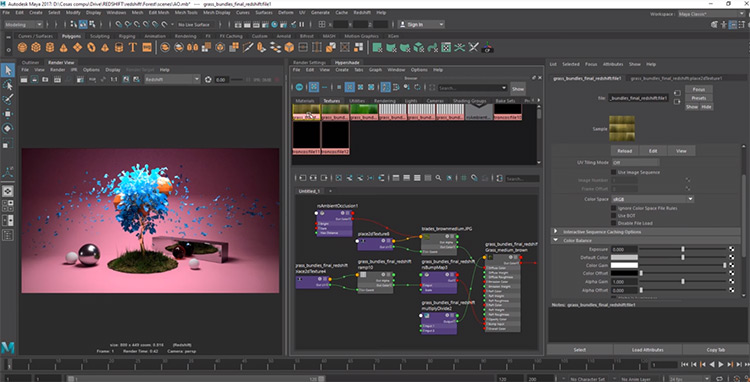What is an Ambient Occlusion (AO) Map?
What is an Ambient Apoplexy (AO) Map?
Tips3D Disclosure: This post may contain affiliate links. That means if you buy something nosotros get a modest committee at no extra toll to yous(learn more)
An Ambient Occlusion or AO map is a grayscale map which contains lighting data. It is not typically used as its own map, and is instead usually combined with the diffuse map to broil in soft shadows.
In 3D engines(both existent time and otherwise) almost lighting and shadow data in the terminal displayed image output is taken from the lights used in the scene.
This is normally done in ane of ii ways:
- The workstation calculating the low-cal's interaction with objects in the scene during the render, done in all production CPU rendering and well-nigh existent time engines running on modern hardware.
- The workstation doing a kind of 'pre-render' to bake lighting highlights and shadows into a lightmap. A lightmap produces a new diffuse map with all the lighting information projected onto it. This means the render engine so uses no lighting information during render time which really softens the load on the end user's auto.
The 2nd situation in a higher place is useful for existent time engines running on older hardware, or lower spec devices like mobile phones.
An ambient occlusion map is similar to a lightmap, merely shouldn't be confused with 1.
AO Maps are much more than subtle than a lighting map and are actually used equally well as lighting data at render fourth dimension, not instead of.
The way its output works technically does not cast shadows similar a lightmap would. It just calculates areas of the mesh that are facing away from the light source and darkens them, without taking any further meshes into account.
This gives an illusion of cocky-shadowing just will not cast a shadow of one object onto another.

AO maps tend to simply take subtle shadows and highlights, which are so commonly overlaid on other maps (usually diffuse, but some people combine information technology with their metalness or specular maps instead). This is done in 2D software such every bit Photoshop.
The end result is that when your model is unlit information technology will still have some simple light information stored on it like it was in an ambiently lit surroundings (hence the proper name, ambient apoplexy).
Once this is combined with your other lighting it helps strengthen your shadow detail and makes a lot of the effectively details of your models pop!
AO maps are a very commonly used tool in modern 3D applications, with almost all of them having some built-in functionality that allows y'all to bake these maps.
Some software like Substance Painter allows you to pigment directly onto your AO maps, thereby giving you more than creative freedom with their output.
Either mode, these are a very useful addition to any high quality return. And I do recommend looking into the best ways to implement them into your workflow.
Source: https://conceptartempire.com/ambient-occlusion-map/
0 Response to "What is an Ambient Occlusion (AO) Map?"
إرسال تعليق